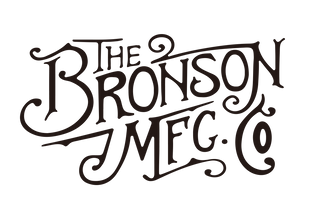Selvedge denim jackets are more than just outerwear — they’re wearable history. Built with the same spirit that once clothed workers, ranchers, and soldiers, each piece carries a story of craftsmanship, evolution, and timeless appeal. But how did these jackets evolve into the icons we know today? Let’s trace their journey through three key generations: Type 1, Type 2, and Type 3.
Type 1 (1930s–1940s): The Beginning of Utility
The story starts in the early 1930s, when denim jackets were designed purely for work. The first-generation Type 1 was boxy, cropped at the waist, and featured a single chest pocket with a flap. A cinch-back buckle on the waistband allowed workers to adjust the fit — a practical detail for long hours of physical labor.

The story starts in the early 1930s, when denim jackets were designed purely for work. The first-generation Type 1 was boxy, cropped at the waist, and featured a single chest pocket with a flap. A cinch-back buckle on the waistband allowed workers to adjust the fit — a practical detail for long hours of physical labor.

These early jackets were cut from dense, raw indigo selvedge denim. They were stiff, durable, and built to survive ranch life and rail yards. Over time, as the indigo faded from deep navy to soft blues, each jacket told a personal story — marks of wear became badges of effort and authenticity.
Even today, the Type 1 remains a symbol of the workwear era: simple, strong, and unmistakably vintage.
Type 2 (1950s): Refinement and Balance

By the 1950s, America was changing — workwear began crossing over into everyday life. The Type 2 reflected that shift. It kept the rugged core of its predecessor but added refinement: two symmetrical chest pockets replaced the single one, and pleated fronts gave the jacket more shape and movement. The buckle back began to disappear, replaced by side tabs for a cleaner silhouette. This version was slightly longer and better suited for off-duty wear — you could see it on workers, musicians, and even in the growing youth culture.

The Type 2 is often considered the perfect balance — it still feels vintage, but with a touch more versatility and comfort.
Type 3 (1960s–Present): The Modern Classic

Then came the 1960s, and with it, the third generation — the Type 3. By this time, denim had fully entered mainstream fashion. The design slimmed down, lost its pleats, and adopted the now-familiar “V” stitching running from the pockets to the waist. This cleaner, sharper design became the template for nearly every denim jacket that followed. Whether worn by truckers on the road or rock musicians on stage, the Type 3 represented effortless cool — practical yet expressive.

It’s no exaggeration to say that every modern denim jacket owes something to the Type 3’s silhouette. It’s timeless and endlessly wearable.
The Beauty of Selvedge Denim
What ties all these generations together is the fabric itself — selvedge denim. Woven on old shuttle looms, it features a tightly bound self-edge that prevents fraying and gives the cloth a dense, textured feel. This method is slower and more costly, but it produces denim that ages beautifully.
As you wear it, the indigo slowly fades along creases and stress points — elbows, cuffs, pockets — revealing a map of your daily life. No two jackets fade the same way, which is part of the charm. A well-worn selvedge jacket doesn’t just look vintage; it becomes yours.
Final Thoughts
Selvedge denim jackets have evolved from workwear essentials to everyday classics without losing their soul. They age, fade, and soften, becoming an extension of you. At Bronson, we continue this tradition with faithfully reproduced silhouettes — each one crafted to honor the originals, yet ready for modern life.
So, which story do you want to wear?




